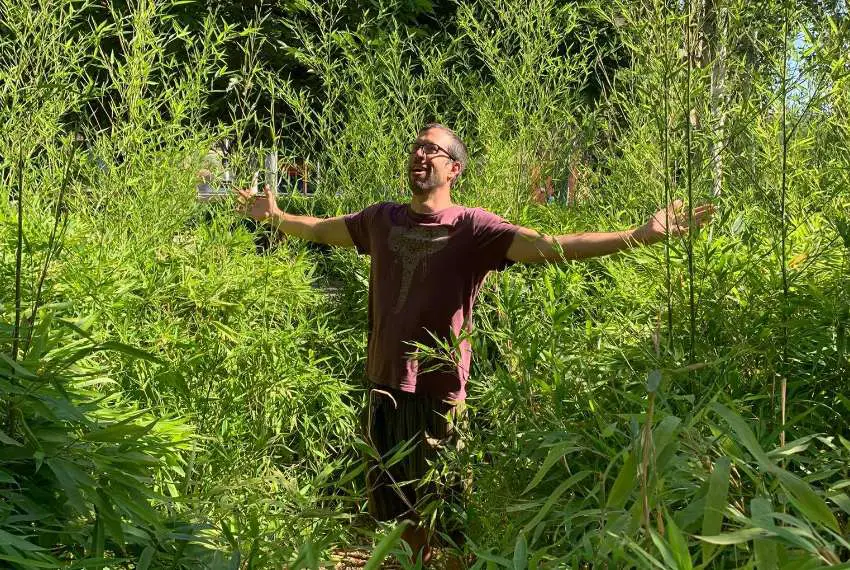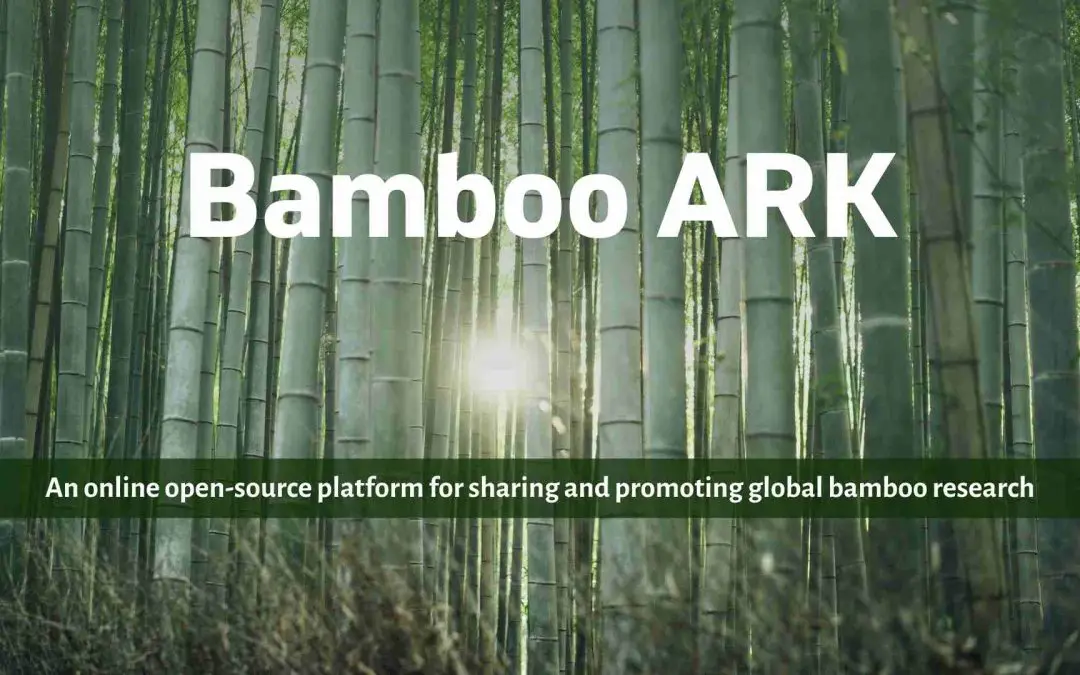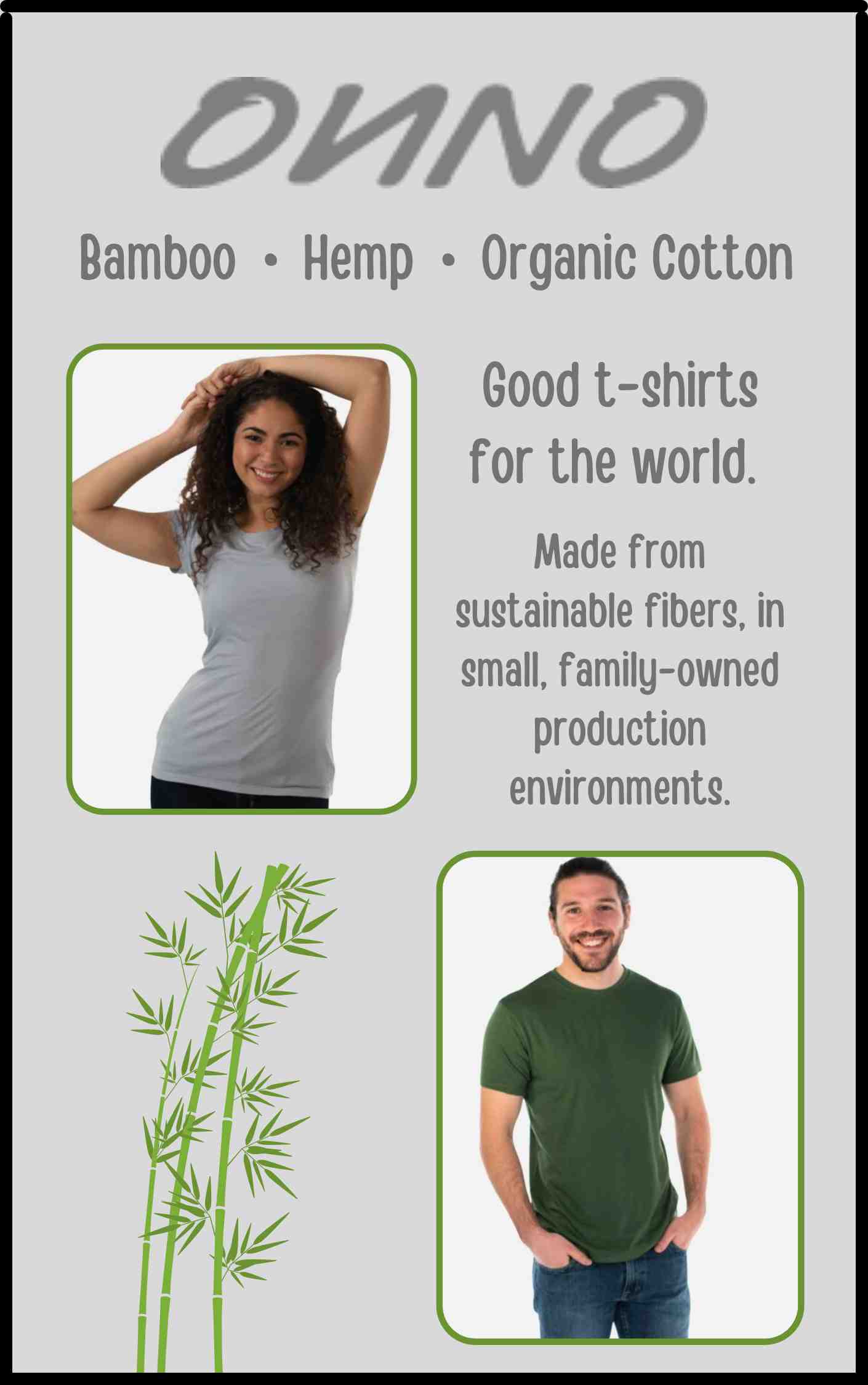When you go looking for answers to questions about bamboo, a lot of people come to Bambu Batu, one of the internet’s leading educational platforms for bamboo. Indeed, our hundreds of articles cover a vast range of topics pertaining to all things bamboo. But bamboo is like a world unto itself, and the more we learn, the more questions we have. And although there’s already a considerable amount of bamboo research from China, Vietnam, India, and elsewhere, it’s often not in English and not accessible to the general public. At last, the time has come to create an online resource to gather and promote the most advanced research related to bamboo cultivation and production.
We are pleased to introduce BambooArk, a collaboration between Bambu Batu and BambooVision. BambooArk is an open-source research platform database, connecting bamboo specialists across the world, to define and better understand bamboo’s enormous range of capabilities. This new project aims to make the global treasury of bamboo knowledge available to everyone, while also raising money to fund more innovative and experimental studies.
At this time, the BambooArk website is still a work in progress, as we wait for fundraising from our partners in Vietnam.
An Ark is Born: Who we are
BambooArk is the brainchild of Dschung Nguyen of BambooVision, based in Hanoi, Vietnam. In just a few years, Dschung has built one of the largest bamboo companies in Vietnam, producing a vast array of quality merchandise, including his flagship product, a bamboo leaf tea that he calls Bleaf.
In developing these products, and the tea in particular, Dschung and his partners recognized the critical need for more data about bamboo. Which species produce the best tea? Which have the highest content of silica, the vital nutrient contained in bamboo leaves? In which types of soil does it grow best? And that was just the beginning. (See below.)
It’s an honor and a privilege to announce that I, Fred Hornaday, have been chosen to act as the institution’s director. After 15 years in the industry, from retail pioneer to educational exemplar, my love and enthusiasm for bamboo have not gone unnoticed. So in late 2021, Nguyen reached out and our mutual love for bamboo revealed an instant synergy. Shortly thereafter, he suggested that I was the ideal candidate for this position. And I humbly accepted.

BambooArk: A search for answers
Studying bamboo is a bit like studying the universe. Let me borrow a metaphor from Albert Einstein. Think of our collective knowledge like the air in a balloon. And think of our unanswered questions like the surface area of the balloon. The more knowledge we add, the more numerous our questions become.
When Bamboo Vision founder Dschung Nguyen was traveling in the central highlands of Vietnam back in 2019, he met a young family who were tilling the land and raising cattle. The landscape here had been detrimentally contaminated and defoliated by Agent Orange and other toxic herbicides during the Vietnam War. But this family had discovered bamboo’s natural properties of phytoremediation, finding that after just five years, the soil was free of chemicals and suitable for cultivation.
This was the incredible revelation that led Dschung to devote his life to promoting bamboo for all its amazing uses. But it also led to many unanswered questions. Which are the best species of bamboo for leeching which chemicals from the soil? What part of the bamboo plant collects these chemicals? What is the time scale for this process?
This is just one area of study where concrete data is almost entirely unavailable. Statistics on bamboo’s capacity to sequester carbon and generate oxygen are still fuzzy, too, with a great disparity between species and other growing factors. Meanwhile, as farmers look to planting commercial bamboo plantations in Europe and the US, where it’s not native, a million questions arise.
Anyone who studies bamboo, even at a cursory level, will immediately recognize its tremendous potential to alleviate the impending climate crisis. But in order to get the most out of this remarkable tool, we need proven data, and we need to make that data available in English for innovators and creators around the world. Beyond that, BambooArk will also serve as a funding platform, generating resources to support environmental research initiatives and assisting scientists in executing their projects.

We are happy to have partners like VNUA (Vietnam National University of Agriculture), RIFI (Research Institute of Forest Industry), MARD (Ministry of Agriculture and Rural Development), VASEAN (Asean Association for Economic Cooperation Development), Rabiloo (IT-Outsourcing specialist) and a network of bamboo experts worldwide to join in our first research projects in Vietnam.
A hub for bamboo research and development
The lack of consolidated research concerning bamboo is both frustrating and amazing. Humans, after all, have been growing, eating, and using bamboo for thousands of years.
That’s not to say that no one has done any research. There’s tons of bamboo research in China. But a lot of farmers can’t read Chinese. Go figure. And the Chinese love their Moso bamboo. It’s one of the most marvelous species, and well worth examining. But there are 1,500 other varieties of bamboo to consider.
In South America, they’ve put a lot of energy into studying Guadua angustifolia, the premiere species of neo-tropical bamboo. But this species is seldom grown outside of Latin America. And do we know if it can grow well in Africa or Asia? We need more data.
Scientists in India have studied a wider range of species, looking at everything from shoot nutrition to which phase of the moon is optimal for harvesting. But the documentation is scattered. We need global cooperation.
Bamboo cultivation is just one side of this colossal coin. In terms of developing a greener, more sustainable society, the uses and applications for bamboo are where the rubber hits the road. We know about bamboo ethanol, we know about bamboo charcoal, we know about bamboo plastics. But how many other novel uses of bamboo remain untapped?
Engineers are working with bamboo lumber in the United States. An architect is building bamboo houses in the Philippines. But how many of them are working together? We need collaboration.
The world is filled with brilliant students on the cusp of the next great discovery. But how can they gather the data to make their vision a reality? We need research and we need funding.
A call for participation
BambooArk aims to address all these needs. To speed up the globalization of bamboo, we will provide the platform to make the scientific data and research available. We are collecting all the data from across the world in various languages and bringing it together in English on one open-source platform for anyone to access. If you’ve participated in or have access to any such studies, please contact us.
More importantly, BambooArk will also serve as a fundraising platform to enable more research projects that make use of bamboo’s unique properties and abilities.
Our first research project will involve collecting data about soil pollution in the central Vietnamese highlands, as described above, and then matching specific soils with the most suitable bamboo species for restoring and regenerating the land.
If you have a research project and are looking for funding, please feel welcome to get in touch with us. We will be happy to assist you. And together we will create for ourselves a greener, wiser world.
We believe in bamboo!
Related articles
Looking to geek out on bamboo science and academia? Check out some of these in-depth stories!










So happy to see your énergy, we work the same in France with BAMBOUCTOU, producing local bamboo, growing knowledge… sharing it with everyone,
Working on vegetal fumigation of poles . Need to be in touch with BAMBOOARK . Best Regards
Very good initiative, spread the message and work together.
Im the president of the NGO Heart4Gambia. We started to explore the local possibilities of a growing bamboo based market … regional value chains.
We have many projects and are interested in any experience of already existing bamboo projects in sub Sahara.
Peter Brunner,